Trinidadian Christmas Recipes for Cake & Ginger Beer
In the Caribbean, specifically in Trinidad and Tobago, Christmas isn’t just a holiday – it’s an experience. A Trini Christmas is something special, a time that holds a special place in the hearts of many.
As the time of year approaches, you can feel the festive atmosphere thickening. “Merry Christmas!” is the common name exchanged among neighbors, with a warmth that rivals the island sun.
As Christmas morning dawns, Trinidadian kitchens are filled with the enticing scent of garlic pork, a traditional dish marinating for days, now coming to life in the frying pan. Many Trinidadian Christmas recipes, like the festive rice, celebrate the island’s rich culinary heritage.

This beloved dish combines red beans, pigeon peas, creamy coconut milk, and vibrant, sweet yellow pepper. And for that extra punch of flavor, a hint of Worcestershire sauce and tomato paste is masterfully blended in, creating a symphony of tastes.
The Christmas lunch is the showstopper. Families gather around the table, laden with dishes that tell tales of tradition and colonization. Macaroni pie sits proudly beside the Christmas ham, glazed with homemade wine.
A potato salad, light and creamy, is often a favorite, while the sponge cake competes with fruit cake and rum cake for attention. And let’s not forget the cornmeal ball wrapped in banana leaf – a throwback to indigenous practices.

For those who prefer non-alcoholic beverages, a soft drink is standard, but the adults often reach for a glass of sorrel or poncho de crème, a creamy drink made with raw egg, fresh spices, and a generous pour of rum.

Speaking of drinks, a white Christmas in Trinidad isn’t about snow, but the homemade coconut-based drink enjoyed during holiday time.
No Trini Christmas is complete without chow, a pickled relish with vegetables and a hint of mustard, and Christmas rice, a delicious mixture typically including fresh sorrel and sometimes even garlic cloves. Local Caribbean Christmas recipes enhance all these dishes, passed down through generations.
You might hear the melodious strains of Susan Macio’s Parang hits between the feasting. As evening falls, some might indulge in a piece of fruit cake, which, unlike its Western counterpart, is moist and laden with rum and homemade wine.
Bay leaves and spices waft from every kitchen, signaling the preparation of yet another dish. And for those who lean towards vegetarian options, the festive rice with a side of pigeon peas cooked in coconut milk becomes the star of their plate.
A Trinidadian Christmas is a fusion of flavors, cultures, and traditions – a testament to the island’s rich history and diverse heritage. It’s more than just a meal; it celebrates life, love, and togetherness.
So, if you ever find yourself in Trinidad during this festive season, prepare for a gastronomic journey you’ll remember forever.
Homemade Ginger Beer Recipe: A Taste of Trinidad
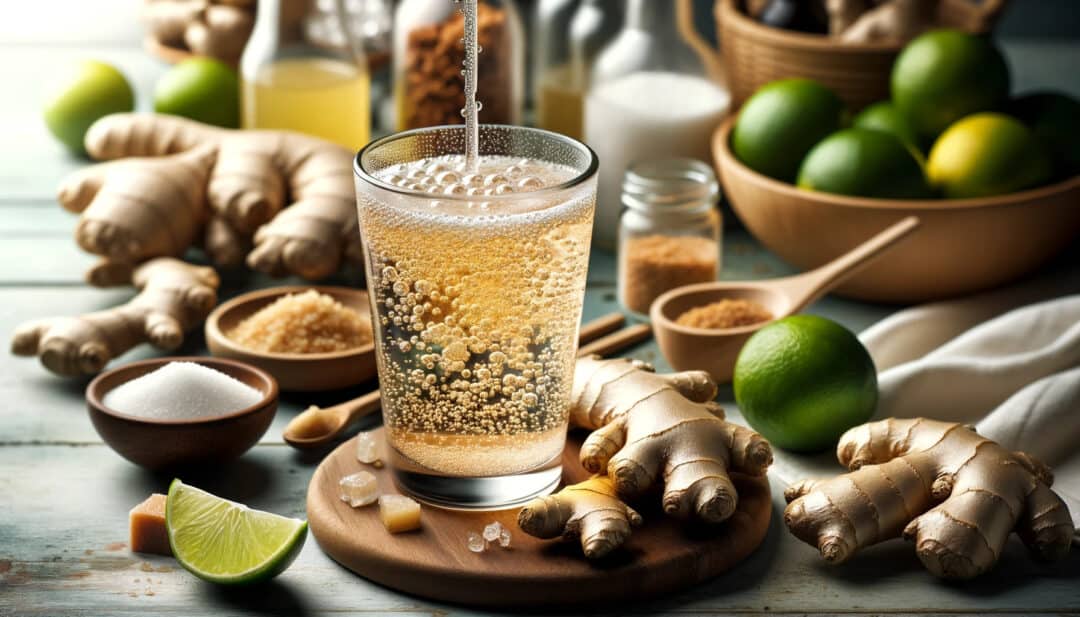
Follow a simple recipe to create authentic Trinidadian ginger beer at home.
Ingredients:
- 1 lb fresh ginger, peeled and finely grated
- 8 cups water
- 2 cups granulated sugar (adjust to taste)
- 1/4 cup freshly squeezed lime juice (from about 2-3 limes)
- A pinch of active dry yeast (this aids in fermentation and carbonation)
- A few cloves or a stick of cinnamon (optional for added flavor)
Instructions:
- Ginger Extraction:
- Place the finely grated ginger in a large bowl.
- Boil 4 cups of the water and pour it over the ginger. Allow it to steep for a minimum of an hour, but longer (up to several hours) is better for a stronger flavor.
- Straining:
- Strain the liquid using a fine-mesh strainer or cheesecloth to remove ginger particles. Press or squeeze the ginger pulp well to extract as much juice/flavor as possible.
- Sweetening and Flavoring:
- To the ginger liquid, add the granulated sugar and stir until fully dissolved.
- Add the lime juice and the remaining 4 cups of water. Stir well.
- If you’re using cloves or cinnamon for added flavor, add them now.
- Fermentation (for carbonation):
- Once the mixture has cooled to room temperature, add the active dry yeast pinch and stir gently.
- Transfer the liquid into clean bottles, leaving about an inch or two of space at the top. This allows space for carbonation. Seal the bottles tightly.
- Store the bottles in a warm, dark place for 1-2 days. This will allow the ginger beer to ferment slightly and carbonate. Please be cautious, as the carbonation can cause pressure to build up in the bottles. Check on them regularly and release any excess pressure.
- Serving:
- Once fermented to your liking, transfer the bottles to the refrigerator to chill.
- When ready to serve, open the bottles slowly to release any built-up pressure, then pour the ginger beer into glasses.
- You can strain it again when serving if you’d like a clearer drink.
Enjoy your Trinidadian Ginger Beer! Remember, the amount of sugar and ginger can be adjusted to taste. Some people prefer a sweeter ginger beer, while others like it more on the spicy side. Adjust to your preference.

Now that you know how to make your homemade ginger beer, there’s no need to rely on store-bought versions. You can savor the authentic taste of Trinidad right in your own home. So gather your ingredients, follow these simple steps, and get ready to impress your friends and family with this delightful beverage that captures the essence of Caribbean culture.
Traditional Trinidadian Black Cake Recipe
Ingredients:

Fruits for Soaking:
- 1 lb prunes, pitted and chopped
- 1 lb raisins
- 1 lb currants
- 1/2 lb mixed peel
- 1/4 lb cherries, chopped
- 1 bottle dark rum (for soaking fruits and for basting)
- 1 bottle of cherry brandy or red-label wine
Cake:

- 1 lb (4 sticks) unsalted butter, softened
- 1 lb brown sugar
- 10 large eggs
- 1 tsp vanilla extract
- 1 tsp almond extract
- 1 lb all-purpose flour
- 2 tsp baking powder
- 2 tsp mixed spice (or a blend of cinnamon, nutmeg, and allspice)
- 1/2 tsp salt
- 1-2 tbsp browning (for color, can add more or less to achieve desired color)
- Zest of 1 lime
Instructions:
Fruit Preparation (best done weeks or months in advance):
- Combine prunes, raisins, currants, mixed peel, and cherries in a large bowl.
- Pour in enough rum and cherry brandy to cover the fruit mixture.
- Store in an airtight container, allowing the fruits to soak for at least 2 days, but the longer, the better (weeks or even months).
Cake Preparation:
- Preheat oven to 250°F (120°C).
- In a large mixing bowl, cream butter and brown sugar until light and fluffy.
- Add eggs one at a time, beating well after each addition. Mix in vanilla and almond extracts.
- Sift flour, baking powder, mixed spice, and salt in another bowl.
- Gradually add the flour mixture to the creamed mixture, mixing well.
- Blend the soaked fruits in a blender or food processor, along with some soaking liquid, until it forms a thick, rough paste.
- Fold this fruit paste, lime zest, and browning into the batter.
- Pour the batter into greased and floured cake pans (traditionally, two 9-inch round pans).
- Bake for 2.5 to 3 hours or until a skewer inserted comes out mostly clean.
- While still warm, drizzle additional rum or brandy over the cakes. Allow to soak in.
- Allow the cake to cool in the pan.
- Storage: Once completely cooled, store the cake in an airtight container. You can also periodically baste with more rum or brandy leading up to when you want to serve it.
Enjoy your Trinidadian Black Cake! Remember, this cake is very rich and boozy, so a little goes a long way. Adjust ingredients according to your taste preferences.
Serving Suggestions
Once your black cake is baked and cooled, it’s time to enjoy this decadent treat. Some people prefer to serve it as is, while others like to drizzle rum over the top for an extra boozy kick. Pair it with a cup of strong coffee or tea for the perfect indulgence during the holiday season.

Exploring the Christmas Herbs of Trinidad
Trinidadian Christmas cooking is a delightful blend of flavors and aromas that truly captures the essence of the holiday season. In this first part of our exploration, we will dive into the aromatic herbs used in traditional Trinidadian Christmas recipes.
These herbs add depth and complexity to dishes and hold medicinal properties and cultural significance during this festive time.
Aromatic Spices: Infusing Flavors and Fragrances
Trinidadian Christmas recipes are known for their generous use of aromatic spices. These spices infuse the dishes with rich flavors and enticing fragrances, instantly transporting you to a world of culinary delight. Some essential herbs used include:
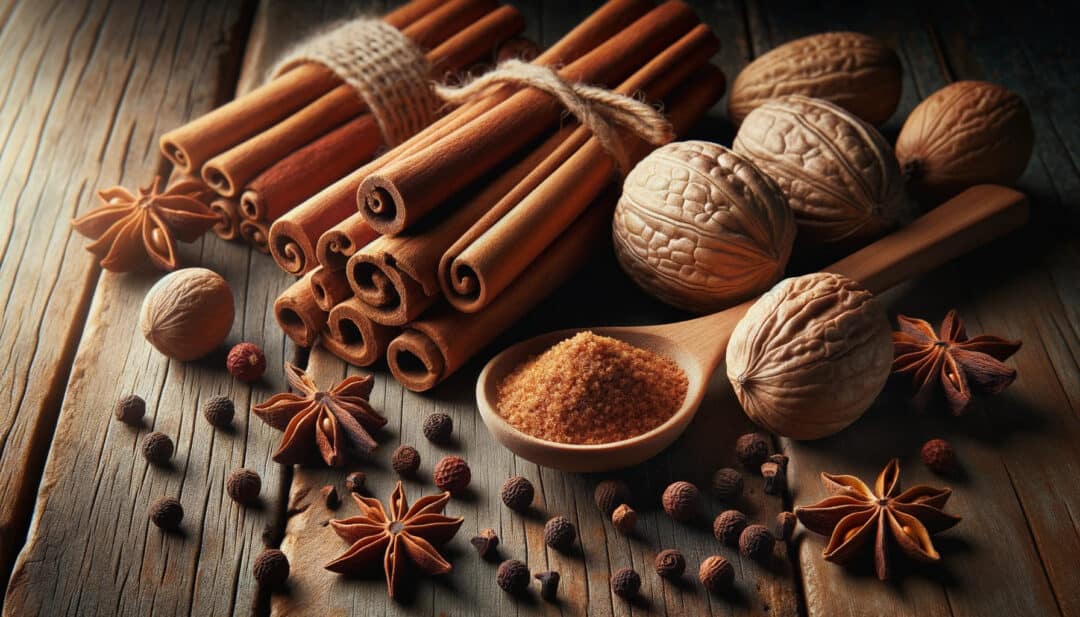
- Cinnamon: This warm, sweet spice adds a comforting touch to cakes, pastries, and drinks like ginger beer.
- Nutmeg: With its distinctively earthy flavor, nutmeg is often grated fresh over desserts such as black cake.
- Cloves: Known for their intense aroma, cloves are commonly added to fruitcakes and ham glazes for a burst of flavor.
Exotic Fruits: Bursting with Tropical Sweetness
Trinidadian Christmas recipes use local tropical fruits, bringing their vibrant colors and natural sweetness to the table. These fruits uniquely twist traditional dishes, creating a fusion of flavors that will tantalize your taste buds. Here are some popular fruits used:
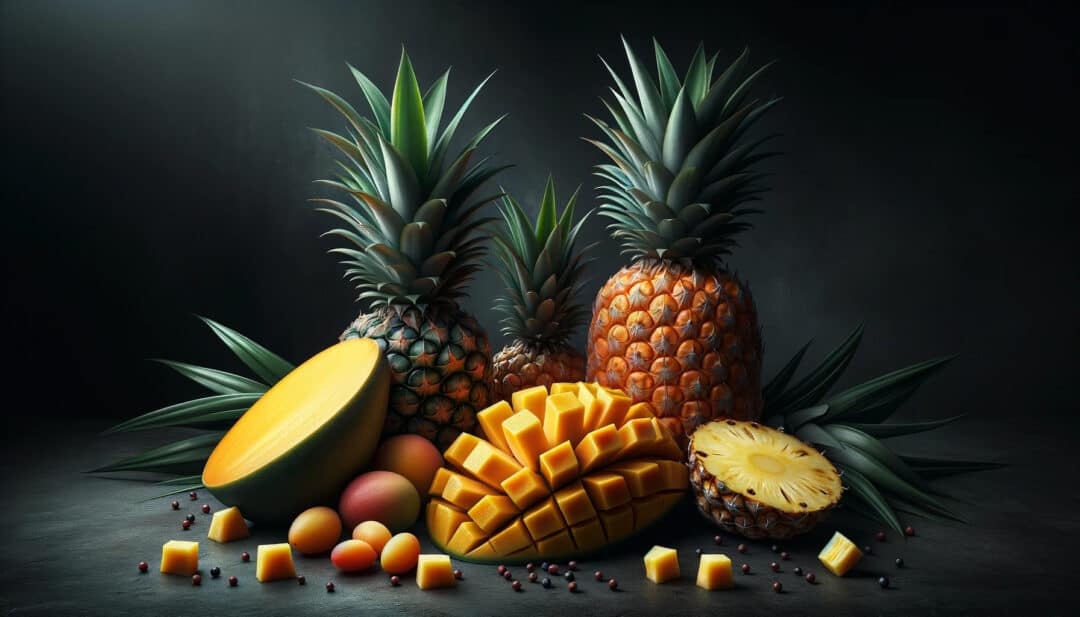
- Mangoes: Whether sliced in a fruit salad or pureed for chutneys, mangoes provide a refreshing burst of tropical sweetness.
- Pineapples: Juicy pineapples add tanginess to savory dishes like ham glazes or can be enjoyed as a refreshing snack.
- Sorrel: The crimson petals of sorrel flowers are brewed into a tart yet sweet beverage synonymous with Trinidadian Christmas celebrations.
Medicinal Herbs: Nurturing the Body and Soul
Trinidadian Christmas cooking goes beyond just culinary enjoyment; it also incorporates herbs with medicinal properties. These herbs are believed to nourish the body and soothe the soul, making them an integral part of the holiday season. Here are a few notable examples:

- Shado Beni: Also known as culantro, this herb is used in various dishes for its distinct flavor and potential health benefits, such as aiding digestion.
- Chandon Beni: Similar to cilantro, Chandon Beni adds a fresh and vibrant taste to dishes while potentially offering antioxidant properties.
- Spanish Thyme: This aromatic herb enhances the flavors of Trinidadian dishes and is believed to have antibacterial properties.
Cultural Significance: Keeping Traditions Alive
These aromatic herbs in Trinidadian Christmas cooking hold deep cultural significance. They are essential ingredients that connect generations, preserving culinary traditions passed down through families over many years.
Preparing these recipes often involves gathering family members together sharing stories, laughter, and love while creating delicious meals that embody the spirit of Christmas.
Exploring the Christmas Herbs of Trinidad
Cloves: Adding Warmth and Flavor
Cloves are an essential herb in Trinidadian Christmas cake and ginger beer recipes. These dried flower buds are known for their warm, sweet, and slightly spicy flavor.
They bring a distinct taste to dishes and lend a delightful fragrance. In addition to their culinary uses, cloves have been traditionally used for their medicinal properties. They possess antioxidant and anti-inflammatory properties, aiding digestion and promoting overall well-being.
Green Seasoning: The Secret Ingredient
Green seasoning is a staple in Trinidadian cooking, especially during Christmas time. It blends fresh herbs like cilantro (shadow benny), thyme, chives, parsley, garlic, onion, pimento peppers (seasoning peppers), and sometimes even celery or shado beni leaves.
This vibrant herb mixture is used as a marinade or base for many savory dishes such as stews, curries, and soups. Green seasoning adds depth of flavor to these dishes while providing numerous health benefits from its aromatic ingredients.
Banana Leaves: A Natural Wrapper
During Christmas festivities, Banana leaves are used in Trinidadian cuisine as natural wrappers for steamed or baked dishes like pastilles (tamales) or roast pork.
These large leaves impart a subtle earthy flavor to the food while keeping it moist during cooking. They act as natural parchment paper or aluminum foil substitutes while adding an authentic touch to the presentation.
Cinnamon: Spice Up Your Holidays
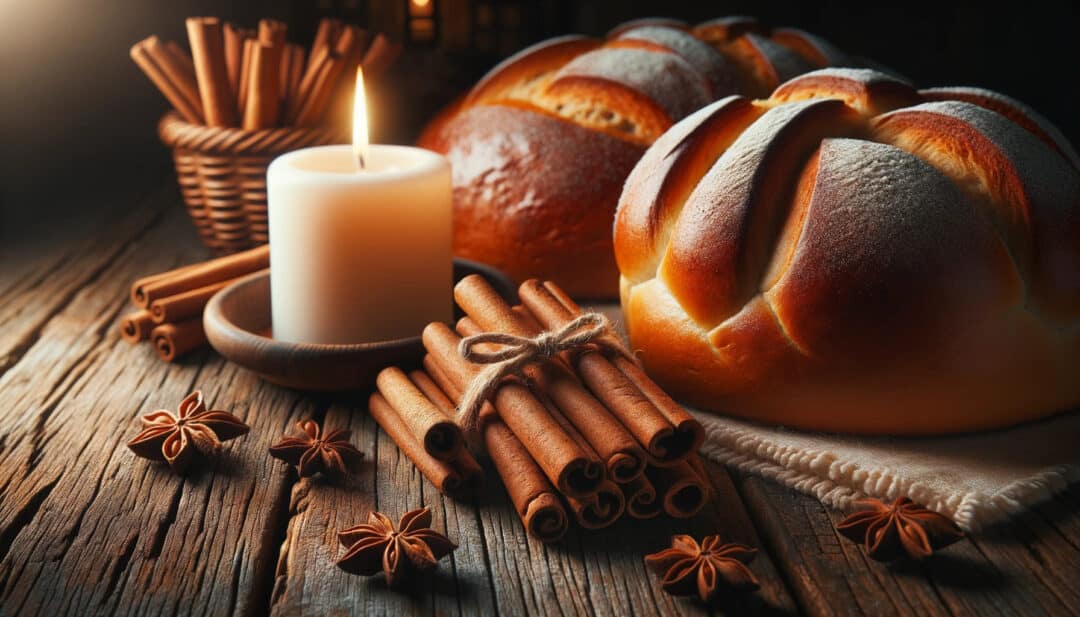
Cinnamon is another herb that takes center stage during Trinidadian Christmas celebrations. Its warm and comforting aroma fills the air as it is used in dishes like sweet bread, pastries, and hot beverages.
Cinnamon adds a delightful flavor and offers potential health benefits such as anti-inflammatory properties and blood sugar regulation.
Capsicum Peppers: A Fiery Kick
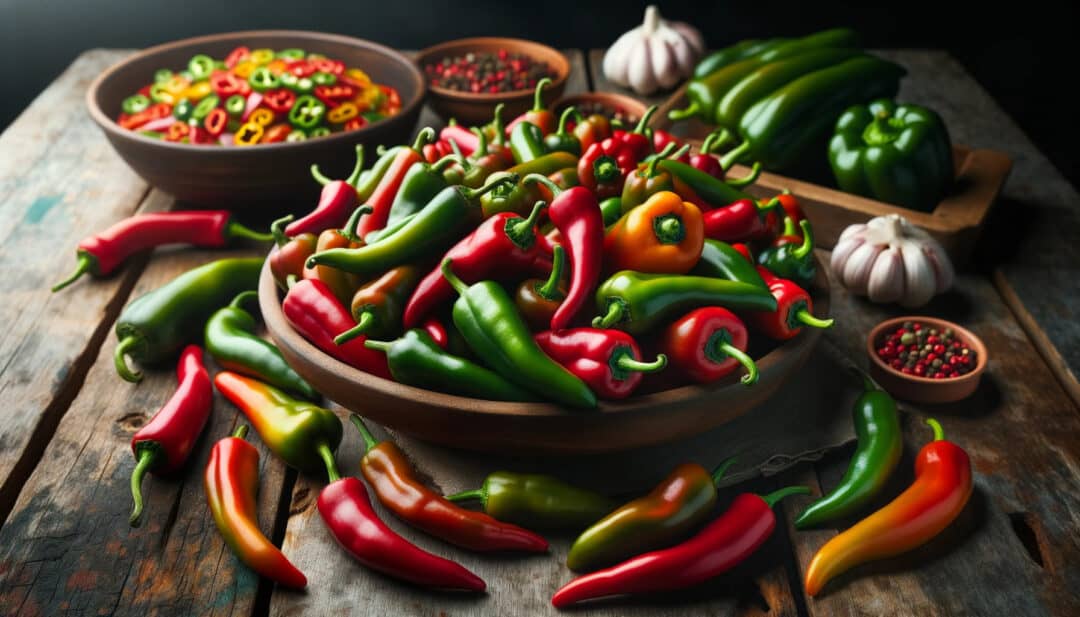
Capsicum peppers, commonly known as pimento or seasoning peppers, are a vital ingredient in Trinidadian cuisine. These small, flavorful peppers add a fiery kick to many dishes, including Christmas recipes.
They provide a burst of heat along with their distinct flavor profile. Capsicum peppers are rich in vitamins A and C and have been associated with potential health benefits such as boosting metabolism and supporting immune function.
As you can see, these herbs play an essential role in creating authentic Trinidadian Christmas dishes. From cloves adding warmth to green seasoning elevating flavors, each herb brings its unique contribution to the table.
So why not try incorporating some of these herbs into your holiday cooking? Get creative with your recipes and savor the vibrant flavors that make Trinidadian cuisine unique.
Sorrel Drink Recipe: A Refreshing Trinidadian Beverage

Quench your thirst with the vibrant flavors of sorrel drink, a beloved Trinidadian beverage synonymous with Christmas celebrations on the island. This easy-to-follow recipe combines hibiscus petals, spices, and a hint of rum to create a refreshing and festive drink that will transport you to the sunny shores of Trinidad.
Experience the Vibrant Flavors
The sorrel drink is made from steeping dried hibiscus petals in water, resulting in a rich ruby-red infusion. The petals impart a tangy and slightly tart flavor balanced by adding spices such as cinnamon, cloves, and ginger.
These aromatic spices add warmth and depth to the drink, making it perfect for sipping during the holiday season.
Raw sugar or molasses can be added to taste to enhance the sweetness of brown drinks. Some recipes also call for the inclusion of currants or raisins, which provide bursts of sweetness and texture.
The final touch comes from a splash of rum, adding a subtle kick and an extra layer of complexity to this delightful beverage.
Cultural Significance during Trinidadian Christmas
In Trinidadian culture, sorrel drink holds excellent significance during Christmas celebrations. It is an essential part of the festive spread and is often served alongside traditional dishes like pastelles (savory meat pies) and black cake (a rich fruitcake soaked in rum).
Many families have their unique recipes passed down through generations.
The preparation of sorrel drink itself becomes a social event during this time. Families gather to clean and sort through dried sorrel petals while sharing stories and laughter.
This sense of community adds a layer of joy to the process, making it more than just a simple beverage but an experience shared with loved ones.
How to Make Sorrel Drink

Making sorrel drinks at home is a straightforward process that requires minimal effort. Here is a simple recipe to get you started:
- Combine 2 cups of dried sorrel petals, 10 cups of water, and your desired spices (cinnamon sticks, cloves, and grated ginger) in a large pot.
- Bring the mixture to a boil and let it simmer for 15-20 minutes.
- Remove the pot from heat and allow the mixture to cool completely.
- Strain the liquid into a pitcher, discarding the solids.
- Sweeten with raw sugar or molasses to taste.
- Add currants or raisins if desired.
- Chill in the refrigerator for at least 2 hours before serving.
- Just before serving, add a splash of rum for an extra kick.
Serve your homemade sorrel drink over ice and garnish with a slice of lime or orange for added freshness.
Now that you have this recipe, you can bring a taste of Trinidadian Christmas into your home by enjoying this delightful beverage with family and friends.
Celebrating Trinidadian Christmas with Cake & Ginger Beer

We also took a closer look at the Christmas herbs of Trinidad and shared a refreshing recipe for sorrel drink. By incorporating these festive elements into your holiday celebrations, you can add a touch of Trinidadian flavor to create memorable experiences for your family and friends.
To fully embrace the spirit of Trinidadian Christmas, why not try making these recipes yourself? Gather your loved ones in the kitchen and embark on a culinary adventure that will transport you to the vibrant streets of Trinidad during the holiday season.
Whether sipping homemade ginger beer or indulging in a rich black cake, these traditions will leave a lasting impression.
FAQs – Trinidadian Christmas recipes
Can I substitute ingredients in the black cake recipe?
👉 Yes, you can make substitutions based on dietary preferences or availability. For example, if you prefer not to use alcohol-soaked fruits, you can replace them with dried fruits soaked in juice.
Similarly, if you don’t have access to specific spices mentioned in the recipe, feel free to use more readily available alternatives.
How long does it take to make ginger beer from scratch?
👉 Making ginger beer from scratch typically takes around two days to ferment the mixture for optimal flavor development. The first day is dedicated to preparing the initial mixture by combining grated ginger, sugar, water, and other ingredients.
On the second day, after straining out any solids and adding yeast for fermentation, you’ll let it sit at room temperature for several hours before transferring it to bottles for carbonation.
Can I adjust the sweetness level of the brown drink?
👉 Absolutely! The sweetness level of sorrel drinks can be adjusted according to personal preference. If you prefer a sweeter taste, add more sugar during the boiling process. Conversely, reduce the sugar used if you prefer a less sweet beverage. Remember to taste and adjust as needed before chilling and serving.
Are there any other traditional Trinidadian Christmas recipes I should try?
👉 Certainly! Trinidadian cuisine offers a wide array of delightful dishes that are cherished during the Christmas season. Some popular options include pastilles (savory meat-filled cornmeal pockets), Ponche de creme (a creamy rum-based drink), and pelau (a one-pot rice dish with meat and vegetables). Exploring these recipes will provide an even deeper understanding of Trinidadian culinary traditions.
Can I freeze black cake for later consumption?
👉 Yes, black cake can be frozen for future enjoyment. After baking and allowing it to cool completely, wrap the cake tightly in plastic wrap or aluminum foil before placing it in an airtight container or freezer bag. When ready to consume, thaw the cake in the refrigerator overnight before serving at room temperature or slightly warmed.
How long does a sorrel drink last in the fridge?
👉 Sorrel drinks can typically be stored in the refrigerator for up to one week if adequately sealed in a glass container or bottle. However, it’s important to note that its flavor may gradually change over time due to continued fermentation processes. It’s best enjoyed within a few days of preparation for optimal taste and freshness.

Born and raised in a family of foodies, Georgia’s passion for cuisine was nurtured from a young age as she learned the intricacies of flavor and texture from her grandmother’s kitchen. As an adult, this early fascination blossomed into a full-fledged love affair with the culinary world.







